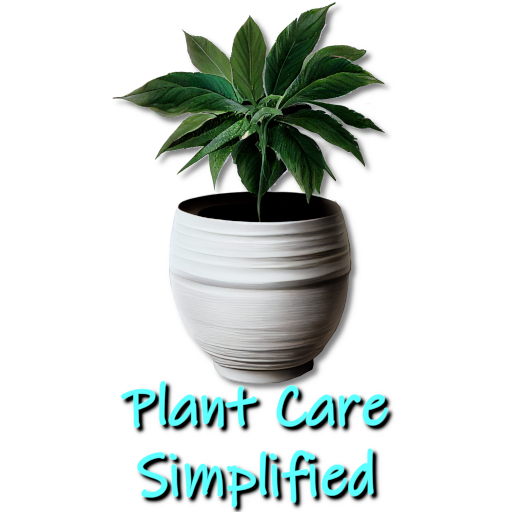When to Repot Your Lipstick Plant: A Comprehensive Guide
Kim is passionate about helping people create beautiful, healthy indoor spaces that are filled with plants. Kim believes that plants make us happier, healthier human...
- Repotting Frequency: Generally, most houseplants, including lipstick plants, should be repotted every two to three years to prevent becoming root-bound, which can hinder growth.
- Best Time to Repot: The ideal time to repot your lipstick plant is during its active growth phase, typically in the spring or early summer. This period promotes faster recovery and growth.
- Signs for Repotting: Signs that your lipstick plant needs repotting include slowed or stopped growth, yellowing or wilting leaves, visible roots protruding from drainage holes, and quick soil drying or poor water absorption.
- Benefits of Slight Root-Binding: Allowing your lipstick plant to become slightly root-bound can have benefits such as more flowers and a more compact growth habit, but it's important to assess if your specific plant can tolerate this condition.
As with any potted plant, knowing when to repot your lipstick plant is an essential aspect of caring for your plant. Repotting promotes healthy growth and prevents the plant from becoming too root-bound, affecting growth.
Below, we will provide a comprehensive guide, discuss the importance of repotting your Lipstick Plant, examine how often it should be done, and finally, what the best time to repot your plant is. In addition, we will also cover how to recognize the signs that your plant needs to be repotted, as well as provide a step-by-step guide on how to repot your Lipstick Plant successfully.
Overview of The Best Time to Repot Your Lipstick Plant:
The Lipstick Plant (Aeschynanthus) is a popular tropical plant known for its vibrant, tubular flowers that resemble a tube of lipstick
| Topic | Information |
|---|---|
| General Guidelines for Repotting | - Every two to three years for most houseplants. - Dependent on growth rate, pot size, and potting mix. |
| Optimal Repotting Interval | Every two to three years for Lipstick Plants. |
| Factors Influencing Repotting Frequency | - Growth rate of the plant. - Size of the current pot. - Type of potting mix used. |
| Best Time to Repot | Spring or early summer during active growth phase. |
| Importance of Timing for Successful Repotting | - To allow the plant to recover and thrive. - Active growth phase is ideal for repotting. |
| Recognizing the Signs for Repotting | - Slowed or stopped growth. - Yellowing or wilting leaves. - Visible roots protruding from drainage holes. - Soil drying out quickly or poor water absorption. |
Understanding the Repotting Frequency
When it comes to repotting your Lipstick Plant, it is important to understand how often it should be done. While there are general guidelines for repotting frequency, the optimal interval for repotting your Lipstick Plant will depend on several factors.
General Guidelines for Repotting Frequency
As a general rule of thumb, most houseplants should be repotted every two to three years. This is because, over time, the plant will outgrow its current pot and become root-bound. When this happens, the roots will begin to circle around the inside of the pot, which can restrict the plant’s growth and lead to other problems.
Optimal Repotting Interval
For Lipstick Plants, the optimal repotting interval is typically every two or three years. However, this can vary depending on several factors, including the plant’s growth rate, the size of its current pot, and the type of potting mix used.
Factors Influencing When to Repot Your Lipstick Plant
One of the main factors that can influence how often you need to repot your Lipstick Plant is its growth rate. If your plant is growing quickly and becoming root-bound sooner than expected, you may need to repot it more frequently.
The size of your plant’s current pot can also play a role in determining when it needs to be repotted. If you are using a small pot, your plant may outgrow it more quickly and require more frequent repotting.
The type of potting mix you use can also affect how often you need to repot your Lipstick Plant. Some potting mixes are designed to retain moisture and nutrients for longer periods of time, which can help extend the time between repottings.
Determining the Best Time to Repot
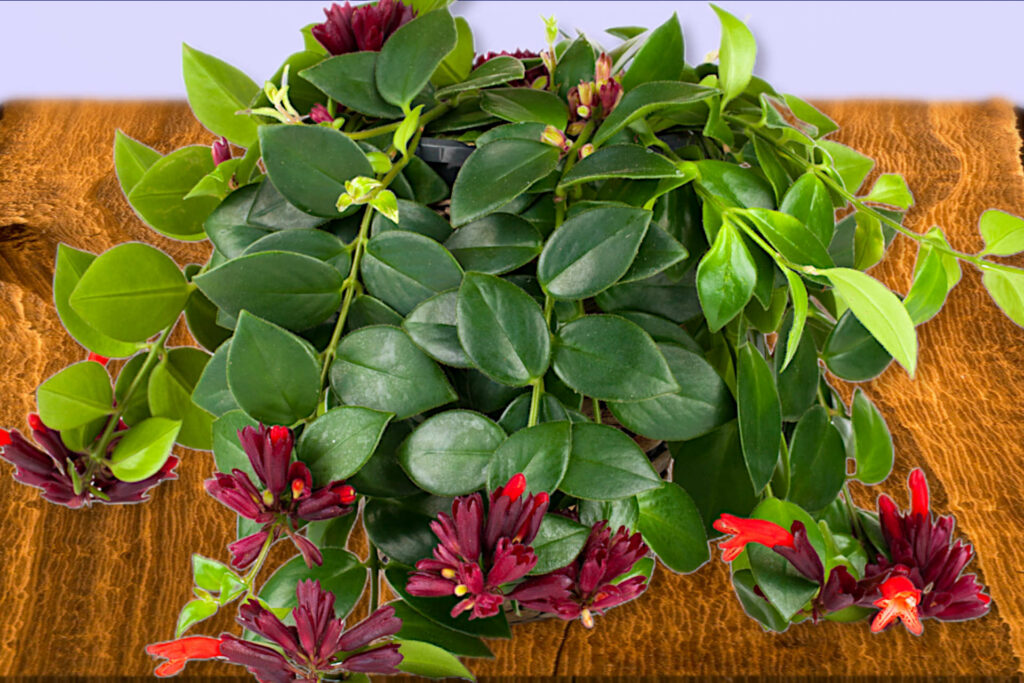
As well as understanding how often to repot your Lipstick Plant, in terms of when to repot your lipstick plant, it is also important to know the best time of year to do so. Timing is crucial for successful repotting, as it can impact the plant’s ability to recover and thrive in its new pot.
Importance of Timing for Successful Repotting
Repotting can be stressful for plants, so it is important to do it at a time when the plant is best able to recover. The ideal time to repot your Lipstick Plant is during its active growth phase when it is producing new leaves and shoots.
Spring and Early Summer as the Ideal Repotting Season
For most houseplants, including Lipstick Plants, the best time to repot is in the spring or early summer. This is because the plant is entering its active growth phase and will be better able to recover from the stress of repotting.
During this time, the plant will be producing new roots, leaves, and shoots, which will help it establish itself in its new pot. Additionally, the warmer temperatures and longer daylight hours of spring and summer will provide optimal growing conditions for your newly repotted Lipstick Plant.
Explanation of the Plant’s Active Growth Phase
Lipstick Plants, like most houseplants, have an active growth phase and a dormant phase. During the active growth phase, which typically occurs in the spring and summer, the plant will produce new leaves, shoots, and roots.
This is the best time to repot your Lipstick Plant because it will be better able to recover from the stress of being transplanted. The new roots will help anchor the plant in its new pot, while the new leaves and shoots will provide energy for growth.
Recognizing the Signs for Repotting
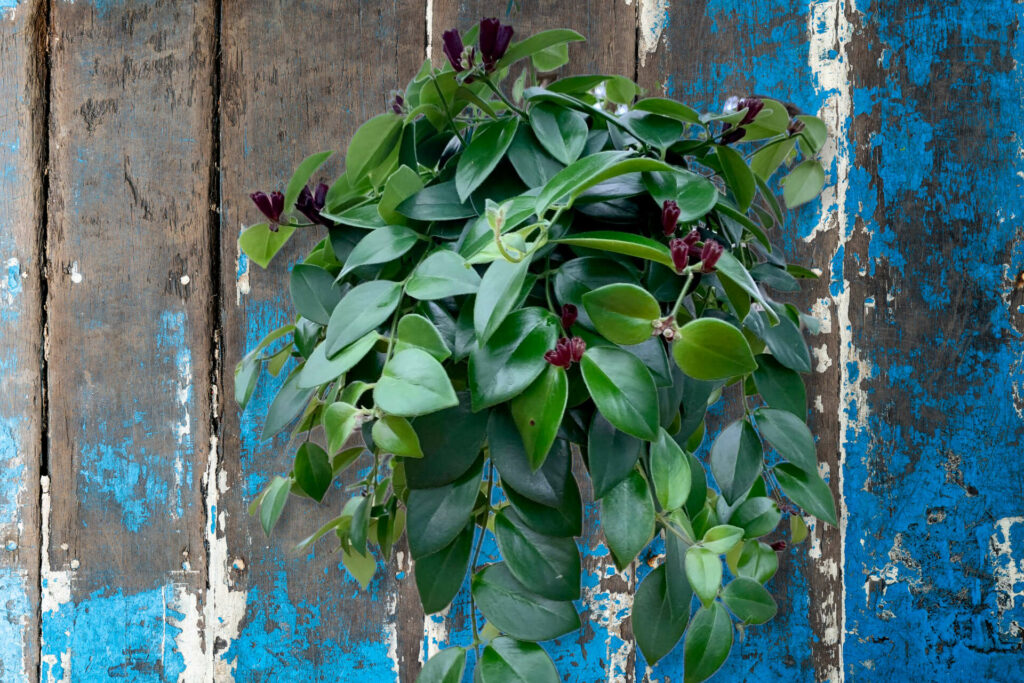
Further to having an understanding of the timing of when to repot your lipstick plant, it is also important to know how to recognize the signs that it needs to be repotted. By monitoring your plant’s overall health and growth, you can determine when it is time to give it a new home.
Monitoring the Plant’s Overall Health and Growth
One of the best ways to determine if your Lipstick Plant needs to be repotted is by monitoring its overall health and growth. If your plant is thriving and producing new leaves and shoots, it may not need to be repotted yet.
However, if you notice that your plant’s growth has slowed or stopped, or if its leaves are yellowing or wilting, it may be time to repot. These can be signs that the plant has outgrown its current pot and is becoming root-bound.
Visible Roots Protruding from Drainage Holes
Another sign that your Lipstick Plant needs to be repotted is if you see roots protruding from the drainage holes at the bottom of its pot. This indicates that the plant has outgrown its current pot and is in need of more space.
When roots begin to circle around the inside of the pot, they can restrict the plant’s growth and lead to other problems. Repotting will give the plant more room to grow and prevent it from becoming root-bound.
Stunted Growth or Yellowing Leaves as Indicators
Stunted growth or yellowing leaves can also be indicators that your Lipstick Plant needs to be repotted. When a plant becomes root-bound, its roots are unable to absorb enough water and nutrients from the soil, which can lead to stunted growth and yellowing leaves.
If you notice these signs in your Lipstick Plant, it may be time to repot it into a larger pot with fresh soil. This will give the plant more room to grow and help it recover from being root-bound.
Discuss Other Potential Signs of a Cramped Root System
In addition to the signs mentioned above, there are other potential indicators that your Lipstick Plant may have a cramped root system and need to be repotted. For example, if you notice that the soil in your plant’s pot dries out quickly or if water runs straight through the pot without being absorbed, this can be a sign that the roots have filled the pot and are preventing water from reaching the soil.
Cautions and Restrictions: Winter Repotting
While the best time to repot your Lipstick Plant is in the spring or early summer, there may be times when you need to repot it during the winter. However, it is important to understand the potential risks associated with repotting during this time and to take extra care when doing so.
Understanding the Plant’s Dormant Phase in Winter
During the winter, most houseplants, including Lipstick Plants, enter a dormant phase. During this time, the plant’s growth slows down, and it may even lose some of its leaves. This is a natural part of the plant’s life cycle and helps it conserve energy during the colder months.
Because the plant is not actively growing during this time, it may not be able to recover as quickly from the stress of repotting. This can make winter repotting more challenging and increase the risk of transplant shock.
Potential Risks Associated with Repotting During Winter
Repotting your Lipstick Plant during the winter can increase the risk of transplant shock. This is because the plant is not actively growing and may not be able to recover as quickly from the stress of being transplanted.
Transplant shock can cause wilting, yellowing leaves, and stunted growth. In severe cases, it can even lead to the death of the plant. To minimize the risk of transplant shock when repotting during the winter, it is important to take extra care and provide your plant with the right conditions for recovery.
Providing Alternative Care During the Dormant Period
If you need to repot your Lipstick Plant during the winter, there are several steps you can take to help it recover from the stress of being transplanted. First, make sure to provide your plant with plenty of bright, indirect light. This will help it photosynthesize and produce energy for growth.
You should also be careful not to overwater your newly repotted Lipstick Plant. During the winter, when the plant is not actively growing, it will not need as much water as it does during the warmer months. Overwatering can lead to root rot and other problems.
Embracing a Slightly Root Bound Lipstick Plant
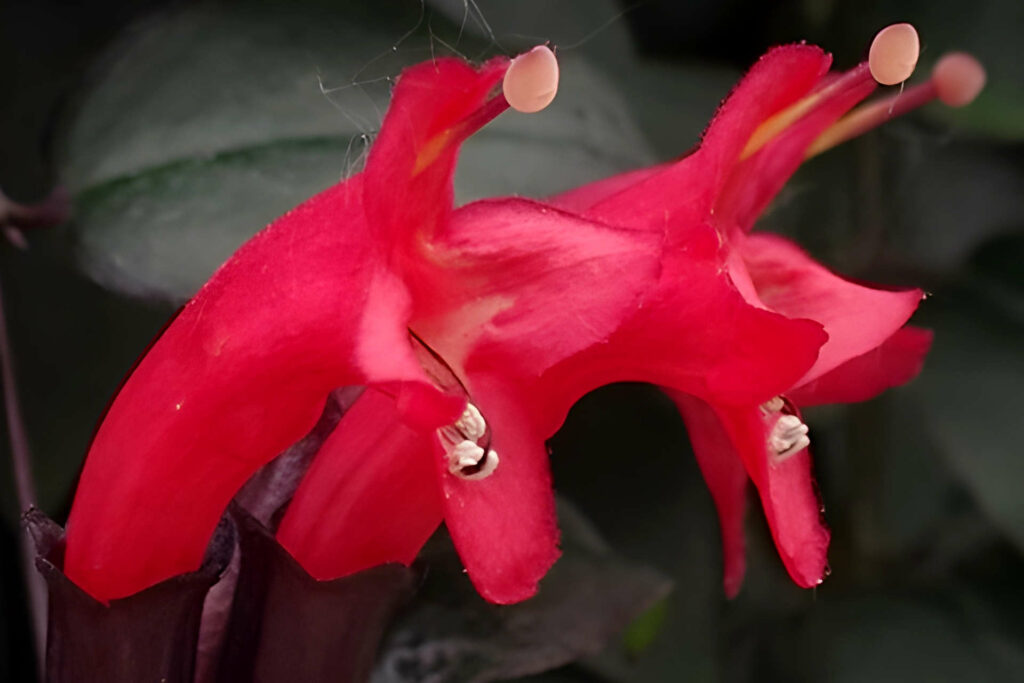
While it is important to repot your Lipstick Plant when it becomes root-bound, there are some benefits to allowing your plant to become slightly root-bound. In this section, we will discuss the concept of being “root-bound” and how it can benefit your Lipstick Plant.
Explaining the Concept of Being “Root Bound”
When a plant becomes “root-bound,” it means that its roots have filled the pot and are beginning to circle around the inside. This can restrict the plant’s growth and lead to other problems, such as stunted growth and yellowing leaves.
While being root-bound can be harmful to plants, there are some benefits to allowing your Lipstick Plant to become slightly root-bound. For example, a slightly root-bound Lipstick plant may produce more flowers and have a more compact growth habit.
Benefits of Slight Root Binding for Lipstick Plants
Allowing your Lipstick Plant to become slightly root-bound can have several benefits. For one, a slightly root-bound plant may produce more flowers. This is because the plant will focus its energy on producing flowers rather than growing new roots and shoots.
A slightly root-bound Lipstick Plant may also have a more compact growth habit. This can be desirable if you want to keep your plant small and manageable.
How to Assess if Your Lipstick Plant Can Tolerate Being Root Bound
Not all plants can tolerate being root-bound, so it is important to assess if your Lipstick Plant can handle it before allowing it to become slightly root-bound. One way to do this is by monitoring your plant’s overall health and growth.
If your Lipstick Plant is thriving and producing new leaves and shoots, it may be able to tolerate being slightly root-bound. However, if you notice that its growth has slowed or stopped or if its leaves are yellowing or wilting, it may be time to repot.
Tips for Maintaining a Happy, Slightly Root-Bound Plant
If you decide to allow your Lipstick Plant to become slightly root-bound, there are several steps you can take to help it thrive. First, make sure to provide your plant with plenty of bright, indirect light. This will help it photosynthesize and produce energy for growth.
You should also be careful not to overwater your slightly root-bound Lipstick Plant. When a plant is root-bound, its roots are unable to absorb as much water from the soil, which can lead to overwatering and root rot.
Step-by-Step Guide to Repotting Your Lipstick Plant
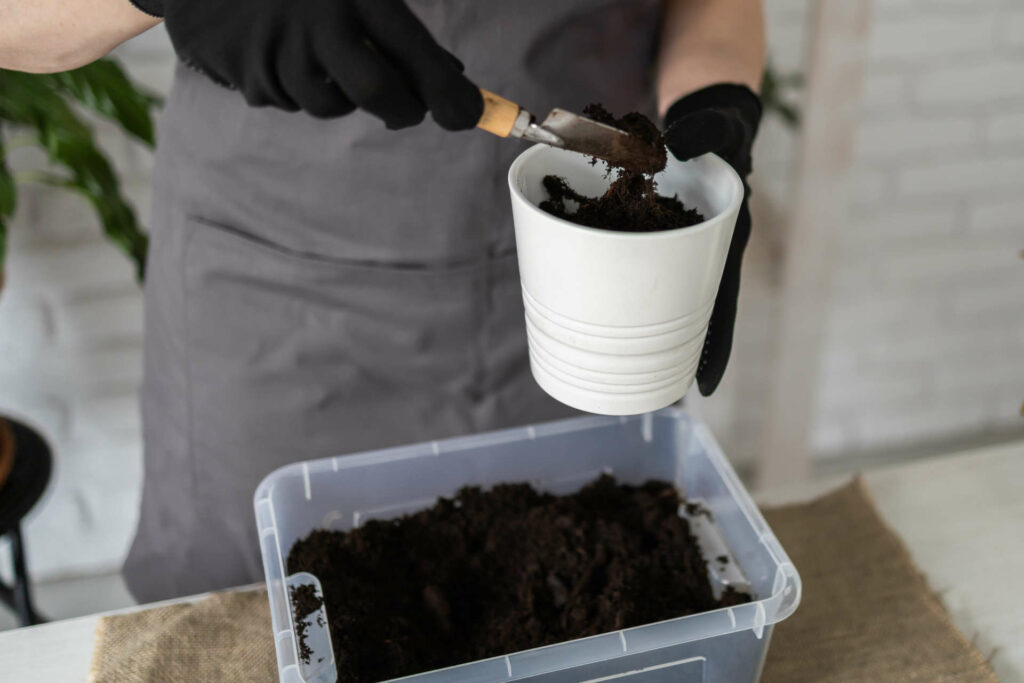
Now that you understand the importance of repotting your Lipstick Plant and how to determine when it needs to be done, it’s time to learn how to repot your plant successfully. In this section, we will provide a step-by-step guide on how to repot your Lipstick Plant.
Preparing the New Pot and Potting Mix
The first step is to determine the correct potting mix for your Lipstick Plant and to prepare the new pot. Choose a pot that is one size larger than the plant’s current pot and has drainage holes at the bottom.
Next, prepare a well-draining potting mix that is suitable for tropical plants. You can use a commercial potting mix or make your own by combining equal parts peat moss, perlite, and vermiculite.
Gently Removing the Plant from Its Current Pot
Once you have prepared the new pot and potting mix, it’s time to remove your Lipstick Plant from its current pot. To do this, gently loosen the soil around the edges of the pot with a trowel or your fingers.
Then, carefully tip the pot on its side and gently slide the plant out. If the plant is root-bound and difficult to remove, you may need to use a knife or trowel to loosen the roots from the sides of the pot.
Inspecting and Pruning the Roots if Necessary
After removing your Lipstick Plant from its current pot, take a moment to inspect its roots. If you see any roots that are circling around the inside of the root ball or growing out of the drainage holes, use a clean pair of scissors or pruners to trim them back.
If the roots are severely root-bound, you may need to make several vertical cuts in the root ball to help loosen them. This will encourage new root growth and help the plant establish itself in its new pot.
Placing the Plant in Its New Pot and Backfilling with Fresh Soil
Once you have inspected and pruned the roots if necessary, it’s time to place your Lipstick Plant in its new pot. Start by adding a layer of fresh potting mix to the bottom of the new pot.
Then, carefully place your plant in the center of the pot and backfill with more fresh soil until it reaches the same level as it was in its previous pot. Gently firm down the soil around the plant to remove any air pockets.
Watering and Aftercare Instructions for the Recently Repotted Plant
After repotting your Lipstick Plant, water it thoroughly until water starts to drain out of the bottom of the pot. Then, place it in a bright location out of direct sunlight.
For the first few weeks after repotting, be sure to monitor your plant closely for signs of transplant shock, such as wilting or yellowing leaves. If you notice any problems, adjust your care accordingly.
Repotting Variations for Different Lipstick Plant Species
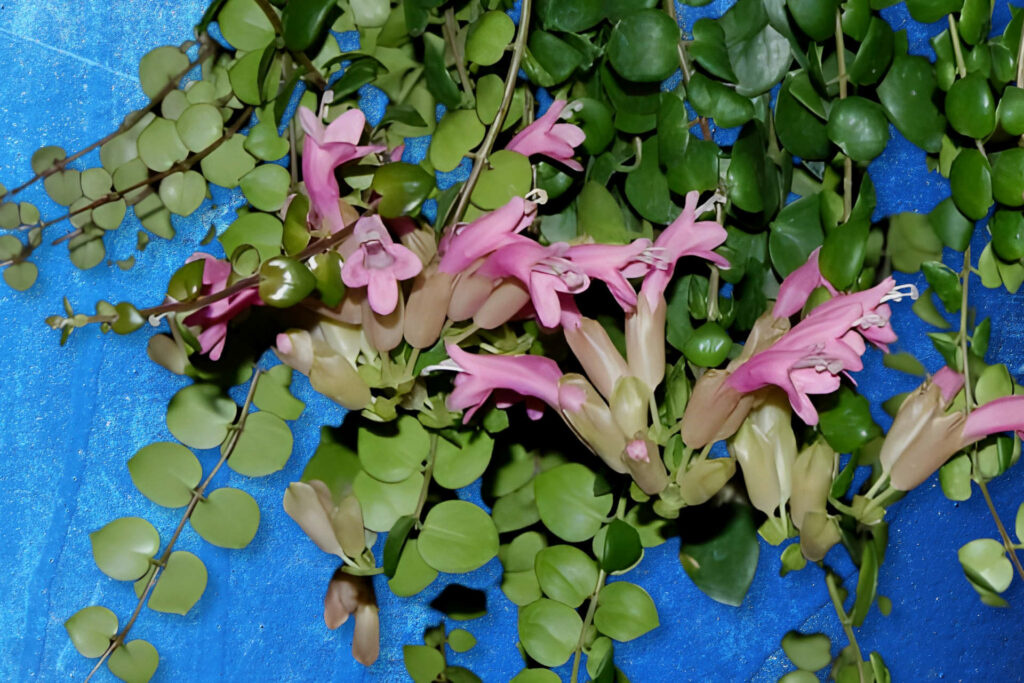
While the general principles of repotting apply to all varieties of Lipstick Plants, there may be some variations depending on the specific species you are growing. In this section, we will discuss some of the unique considerations for repotting different Lipstick Plant species.
Brief Overview of Other Common Lipstick Plant Species
In addition to the common Lipstick Plant (Aeschynanthus radicans), there are several other species that are popular among houseplant enthusiasts. These include the Black Pagoda Lipstick Plant (Aeschynanthus longicaulis), the Mona Lisa Lipstick Plant (Aeschynanthus speciosus), and the Twisted Lipstick Plant (Aeschynanthus pulcher).
Each of these species has its own unique characteristics and care requirements. When repotting, it is important to take these differences into account to ensure the best outcome for your plant.
Unique Considerations for Repotting Various Species
When repotting different Lipstick Plant species, there may be some unique considerations to keep in mind. For example, some species may prefer a specific type of potting mix or pot size.
It is also important to consider the growth habit of the specific species you are growing. Some Lipstick Plants have a trailing growth habit and may benefit from being repotted into a hanging basket or a pot with a trellis.
Addressing Potential Challenges with Specific Species
Repotting different Lipstick Plant species can also present some unique challenges. For example, some species may be more prone to transplant shock or may require extra care during the repotting process.
If you are unsure how to repot your specific Lipstick Plant species, it is always a good idea to consult with a knowledgeable plant expert or do some research online. This will help you avoid potential problems and ensure the best outcome for your plant.
Troubleshooting Common Repotting Issues
Even with the best of intentions, repotting your Lipstick Plant can sometimes present challenges. In this section, we will discuss some common problems that may arise during repotting and provide tips on how to handle them.
Discussing Common Problems That May Arise During Repotting
One common problem that can arise during repotting is transplant shock. This occurs when the plant experiences stress from being removed from its current pot and placed in a new one. Transplant shock can cause wilting, yellowing leaves, and stunted growth.
Another common problem is root rot. This can occur if the plant is overwatered after being repotted or if the new potting mix does not drain well. Root rot can cause the roots to turn black and mushy, and can eventually lead to the death of the plant.
How to Handle Transplant Shock and Other Post-Repotting Issues
If your Lipstick Plant experiences transplant shock after being repotted, there are several steps you can take to help it recover. First, make sure to provide your plant with plenty of bright, indirect light. This will help it photosynthesize and produce energy for growth.
You should also be careful not to overwater your newly repotted Lipstick Plant. During the first few weeks after repotting, the plant will be more susceptible to root rot, so it is important to allow the soil to dry out slightly between waterings.
Tips for Promoting Successful Recovery and Growth After Repotting
In addition to providing your Lipstick Plant with the right care after repotting, there are several other steps you can take to promote successful recovery and growth. For example, you can add a rooting hormone to the new potting mix to encourage new root growth.
You can also provide your plant with a balanced, water-soluble fertilizer to give it a boost of nutrients. This will help it recover from the stress of repotting and promote healthy growth.
Final Thoughts: When to Repot Your Lipstick Plant
Repotting your Lipstick Plant is an essential part of caring for it and promoting healthy growth. By understanding the importance of repotting, how often it should be done, and the best time to do it, you can help your plant thrive.
In this guide, we have considered a lot of the various factors that can influence when to repot your lipstick plant and the repotting frequency, as well as provide a step-by-step guide on how to repot your plant successfully. We have also covered some of the unique considerations for repotting different Lipstick Plant species and provided tips on how to troubleshoot common repotting issues.
Commonly Asked Questions
Q: How often should I repot my Lipstick Plant?
A: As a general rule of thumb, most houseplants, including Lipstick Plants, should be repotted every two to three years. However, this can vary depending on several factors, including the plant’s growth rate, the size of its current pot, and the type of potting mix used.
Q: When is the best time to repot my Lipstick Plant?
A: The best time to repot your Lipstick Plant is in the spring or early summer when the plant is entering its active growth phase. During this time, the plant will be producing new roots, leaves, and shoots, which will help it establish itself in its new pot.
Q: How do I know if my Lipstick Plant needs to be repotted?
A: There are several signs that your Lipstick Plant may need to be repotted. These include slowed or stopped growth, yellowing or wilting leaves, visible roots protruding from the drainage holes at the bottom of the pot, and soil that dries out quickly or water that runs straight through the pot without being absorbed.
Q: Can I repot my Lipstick Plant during the winter?
A: While it is possible to repot your Lipstick Plant during the winter, it is important to understand the potential risks associated with doing so. Repotting during the winter can increase the risk of transplant shock and may require extra care to help the plant recover.
Q: What are the benefits of allowing my Lipstick Plant to become slightly root-bound?
A: Allowing your Lipstick Plant to become slightly root-bound can have several benefits. For example, a slightly root-bound plant may produce more flowers and have a more compact growth habit. However, not all plants can tolerate being root-bound, so it is important to assess if your Lipstick Plant can handle it before allowing it to become slightly root-bound.
Videos
Kim is passionate about helping people create beautiful, healthy indoor spaces that are filled with plants. Kim believes that plants make us happier, healthier human beings, and she loves sharing her knowledge with others so they can experience the joys of plant care for themselves. <a href="https://plantcaresimplified.com/kim-marson/">Read more</a>
More Posts